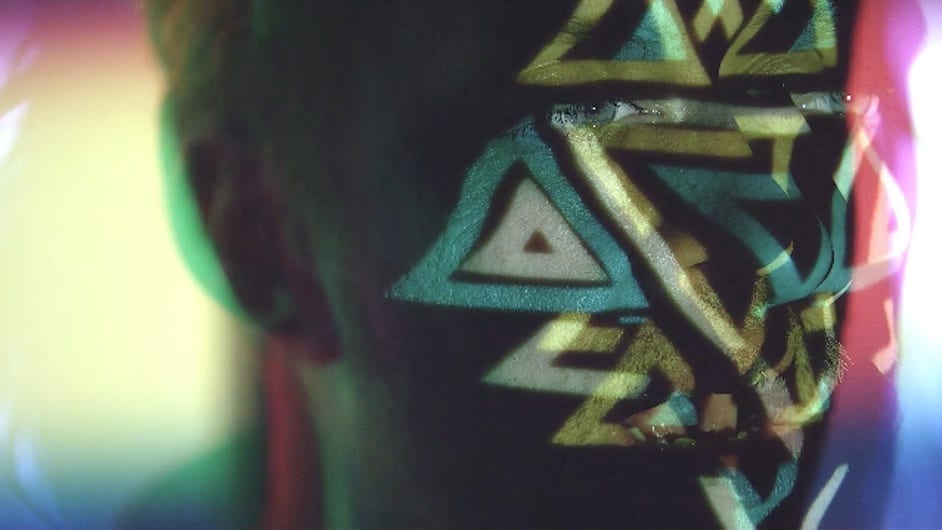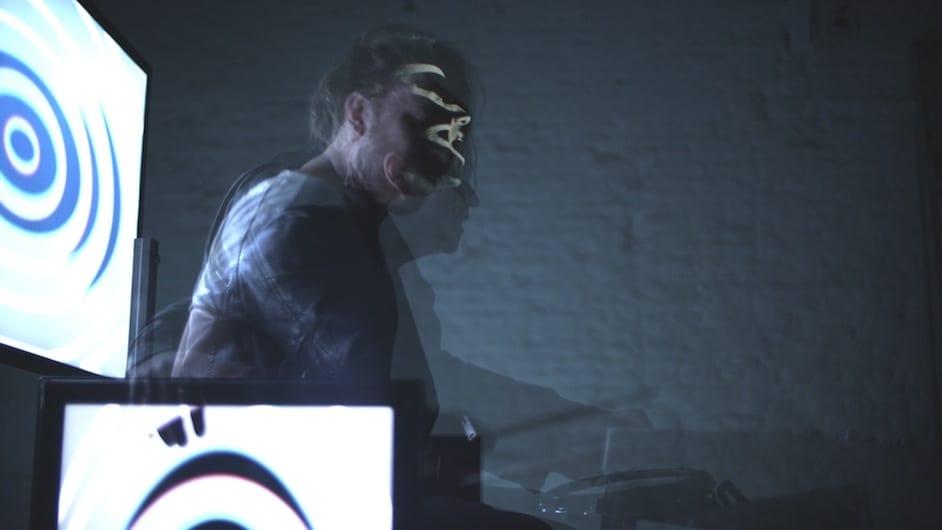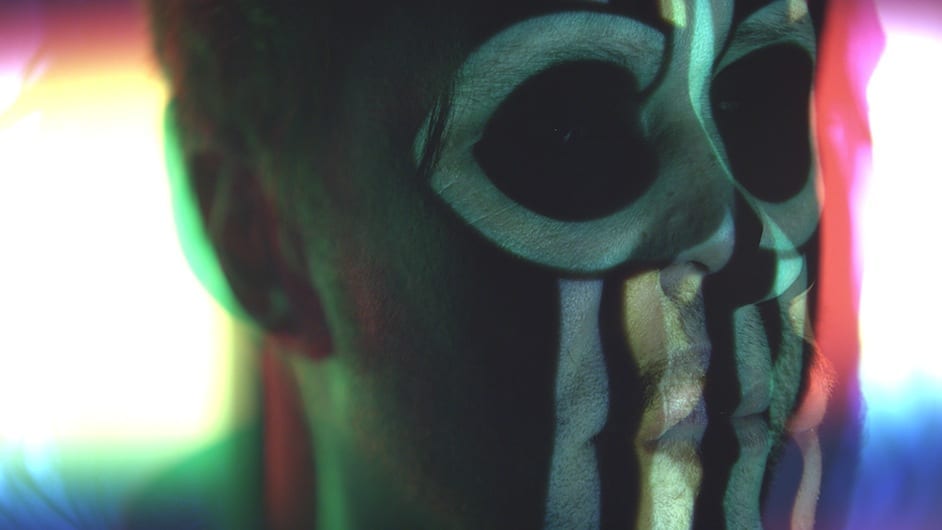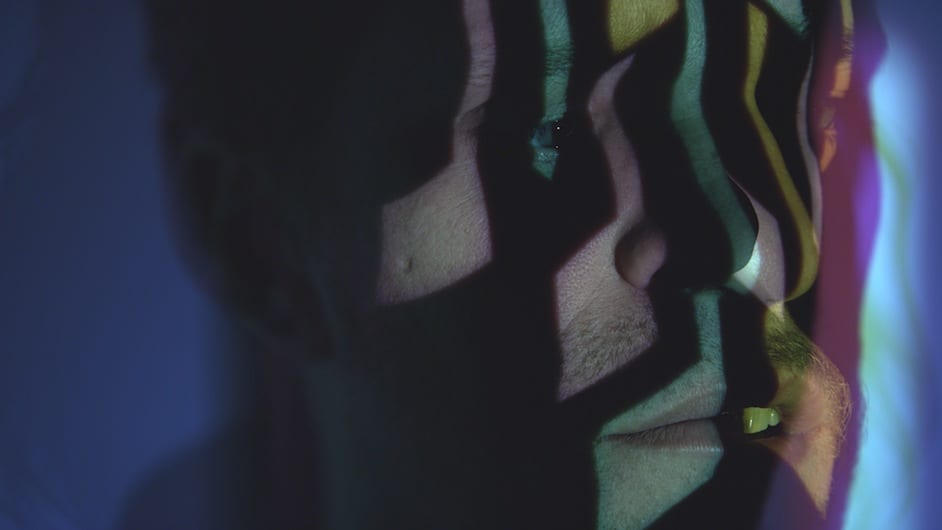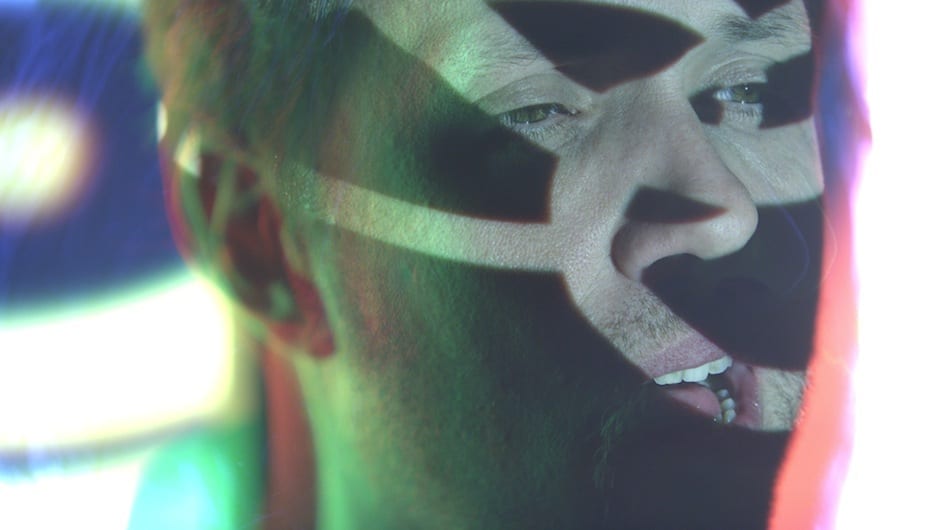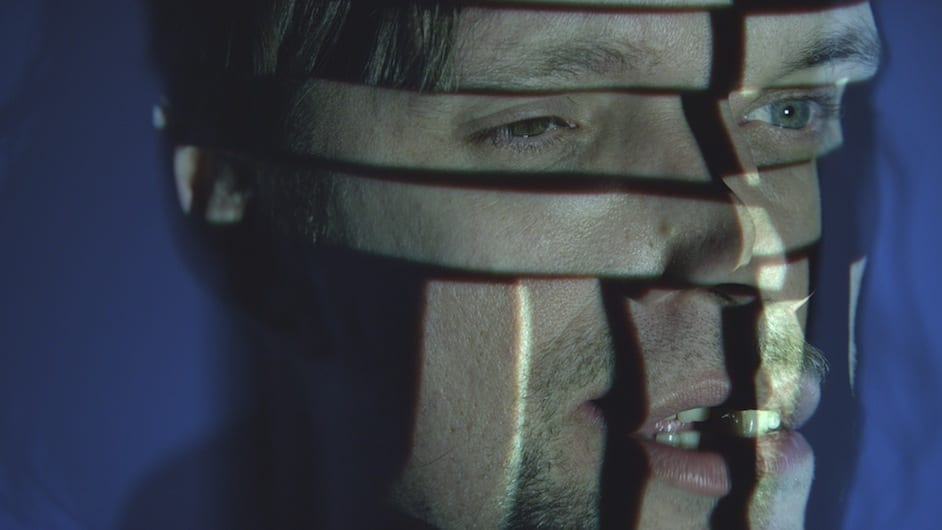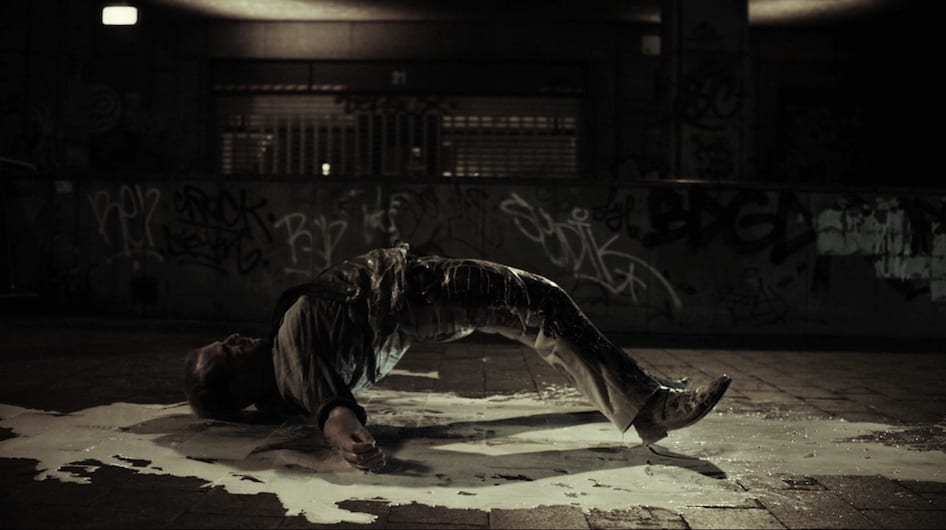You’re pretty hot on special effects, such as your earlier work for Raveyards’ Remember and Amon Tobin’s Esther. When you were devising this latest video, Stunts, for Raveyards did you always have this effect in mind, what was the origin of the idea?
Thank you! I’ve always been a big fan of special effects of all kinds growing up. I’ve personally never felt exclusive to computer graphics, as long as the desired effect is achieved. After my studies, cg became a more natural choice for hard-to-achieve effects, but I’ve always preferred working with practical effects. It’s nice to work with something tangible.
For the brief, the band just wrote us “LSD” as an overall reference. So colors were a must, and I wanted to make something hypnotic with it, trying to suit the track best I could. And as Raveyards wanted to keep a mysterious image, I thought of using projections as a revealing tool.
Please tell us about the process of making the film – particularly about building up the images, what programmes you worked in, and what were the key challenges of the production.
The idea was to create an amalgam of the band members’ faces, through a combination of techniques: projections and multiple exposure photography (or at least the same principle). I chose to treat the projections as colored bundles of light instead of projected images, using simple geometric shapes to reveal their features, as the straight lines bend around their faces. There’s a different piece of the animation projected on each of the musicians, and all animations put together create a new composite face. Using the same principle applied to projections playing behind them, I could also play with their silhouettes and reveal them in turn, in part or all at once in different manners, by playing with additive light.
All designs were first drawn on paper, traced in Illustrator and animated in After Effects.
The main challenge during production was that the six resulting animations (one front and one back of each of the musicians) had to be played in sequence for each shot; We’d sit the singer in the throne, play the projections on his face for the duration of the song while filming. Then we’d film the same person, this time with the throne turned on, without projections. Then on to the next person, and so on and so forth, sometimes with instruments, etc.
Only then could we set the camera to a different viewpoint, and start over. That was really repetitive work, but the team and the band delivered a great performance throughout… the 19-hour shooting day it became.
Did it take forever to create?
Actually, no. It took us two and a half weeks from start to finish. One week for research and design, another for animation on one hand, and construction of the throne by The Protocol Room on the other. We shot the video in a day, after which I spent a small week synchronizing the layers of video, and editing.
How difficult was it to edit the images to the rhythm of the track?
The cool thing was that there’s practically no post-production, because all effects come from how the animation was split up.
So I first layered the different takes into all the composite shots (lasting sometimes most of the track) and rendered those in low-res for editing.
The editing itself was pretty straightforward since all the effects were inside the shots. There’s also hardly any colorgrading on the final images at all for that matter; the musicians changing colors, appearing then disappearing has nothing to do with complex layer opacity animation, but are only achieved with the light the animations are creating.
All of it is a direct result of the single layers of footage put together.
Well, mostly. I must admit I had a little more fun during the middle-eight of the song, editing different layers inside the same (frontal) shot, but that’s all the post-production trickery there was.
